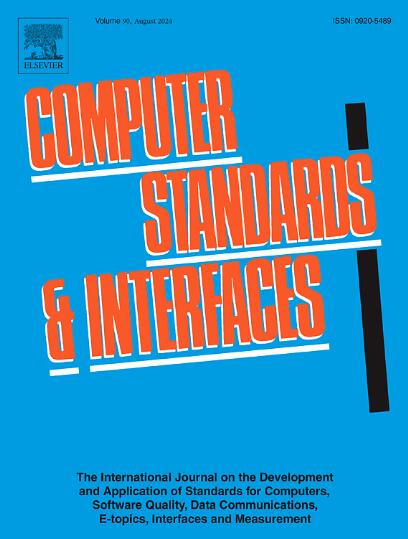SMART-DEFENSE: 3D hexagonal federated network for systematic attack detection in blockchain-integrated healthcare environment
IF 3.1
2区 计算机科学
Q1 COMPUTER SCIENCE, HARDWARE & ARCHITECTURE
引用次数: 0
Abstract
Ensuring the security of healthcare systems is crucial for protecting sensitive patient data from breaches and unauthorized access, thereby preserving confidentiality and maintaining trust in medical institutions. Robust security measures are also vital in preventing medical identity theft, which can result in fraudulent treatments and financial losses for patients. However, existing security frameworks often suffer from critical shortcomings, including weak encryption methods, inadequate access controls, and ineffective incident response mechanisms, leaving systems vulnerable to cyber threats. Additionally, many traditional security solutions lack adaptability to emerging technologies such as telemedicine and the Internet of Things (IoT), which introduce new attack vectors if not properly managed. To address these challenges, we introduce SMART-DEFENSE (Secure Medical Architecture for Resilient Trust and Dynamic Encryption in Federated Edge Networks with Security Enhancements), a novel defense model specifically designed for smart healthcare environments. The proposed framework consists of key components, including medical IoT devices, a Detective Gateway (DG), Edge Servers with Honeypot (HES), a Blockchain-assisted Cloud Server (BCS), and a Trust Integrity Authority (TIA). To enhance scalability, a 3D hexagonal-based network architecture (3D-Hexa) is implemented as the foundation of the system. Security is reinforced through Decentralized Identity Management and Dynamic Trust Scoring, incorporating Shuffled Pass Points (SPP) for authentication and Optimizer-based Trust Evaluation (OTE) via the DG. To improve threat detection accuracy, Stratified Federated Learning (SFL) is employed within the HES, enabling a collaborative defense mechanism against cyberattacks. Finally, Chaotic Encryption Blockchain (CEB) ensures secure data management by strengthening both privacy and integrity. By integrating these cutting-edge technologies, SMART-DEFENSE provides a comprehensive, resilient, and scalable security framework for smart healthcare achieving a 28.5 % reduction in False Acceptance Rate, a 16.9 % increase in authentication success rate, and a 4.15 % improvement in trust evaluation accuracy over existing models effectively mitigating cyber threats while ensuring the privacy and reliability of healthcare data.
SMART-DEFENSE:用于区块链集成医疗环境中系统攻击检测的3D六边形联合网络
确保医疗保健系统的安全性对于保护敏感的患者数据免遭泄露和未经授权的访问至关重要,从而保护机密性并维护对医疗机构的信任。强有力的安全措施对于防止医疗身份盗窃也至关重要,这可能导致欺诈性治疗和患者的经济损失。然而,现有的安全框架往往存在严重缺陷,包括加密方法薄弱、访问控制不足和无效的事件响应机制,使系统容易受到网络威胁。此外,许多传统安全解决方案缺乏对远程医疗和物联网(IoT)等新兴技术的适应性,如果管理不当,这些技术会引入新的攻击媒介。为了应对这些挑战,我们引入了smart - defense(针对具有安全增强功能的联邦边缘网络中的弹性信任和动态加密的安全医疗架构),这是一种专门为智能医疗保健环境设计的新型防御模型。该框架由关键组件组成,包括医疗物联网设备、侦探网关(DG)、带蜜罐的边缘服务器(HES)、区块链辅助云服务器(BCS)和信任完整性授权机构(TIA)。为了提高系统的可扩展性,采用了基于三维六边形的网络架构(3D- hexa)作为系统的基础。通过分散的身份管理和动态信任评分,通过DG整合用于身份验证的洗牌通行证点(SPP)和基于优化器的信任评估(OTE),增强了安全性。为了提高威胁检测的准确性,在HES内部采用了分层联邦学习(SFL),实现了对网络攻击的协同防御机制。最后,混沌加密区块链(CEB)通过加强隐私和完整性来确保安全的数据管理。通过集成这些尖端技术,smart - defense为智能医疗保健提供了一个全面、有弹性和可扩展的安全框架,在现有模型的基础上,实现了错误接受率降低28.5%,身份验证成功率提高16.9%,信任评估准确性提高4.15%,有效缓解了网络威胁,同时确保了医疗保健数据的隐私和可靠性。
本文章由计算机程序翻译,如有差异,请以英文原文为准。
求助全文
约1分钟内获得全文
求助全文
来源期刊

Computer Standards & Interfaces
工程技术-计算机:软件工程
CiteScore
11.90
自引率
16.00%
发文量
67
审稿时长
6 months
期刊介绍:
The quality of software, well-defined interfaces (hardware and software), the process of digitalisation, and accepted standards in these fields are essential for building and exploiting complex computing, communication, multimedia and measuring systems. Standards can simplify the design and construction of individual hardware and software components and help to ensure satisfactory interworking.
Computer Standards & Interfaces is an international journal dealing specifically with these topics.
The journal
• Provides information about activities and progress on the definition of computer standards, software quality, interfaces and methods, at national, European and international levels
• Publishes critical comments on standards and standards activities
• Disseminates user''s experiences and case studies in the application and exploitation of established or emerging standards, interfaces and methods
• Offers a forum for discussion on actual projects, standards, interfaces and methods by recognised experts
• Stimulates relevant research by providing a specialised refereed medium.
 求助内容:
求助内容: 应助结果提醒方式:
应助结果提醒方式:


